Following the interesting topics we saw at Day 01 of WSO2Con Asia 2018, we found ourselves back at the Hilton Colombo for Day 02 of WSO2Con Asia 2018.
Day 02 of WSO2Con Asia 2018 consisted of multiple tracks across three halls. The tracks were divided into categories of Digital Native Strategies, Architecture, and Customer Stories. We dropped by all three halls to see what exactly we could learn. Here’s what we found out.
How Bhutan implemented an e-Government
The first customer story for the day was by Jigme Tenzing, Chief ICT Officer, Department of IT & Telecom, Royal Government of Bhutan. Jigme started off by giving a brief overview of Bhutan at a glance. In case you didn’t know, Bhutan is divided into 20 districts and 205 sub-districts.
Jigme went on to explain that they place more priority over the happiness of the citizen than how much the country can generate in terms of domestic products. As such, they believe in GNH or Gross National Happiness over the usual GDP. If citizens are happy, then that means the economy would automatically flourish as well, he explained.
Broadly speaking, Bhutan started its ICT development journey in 1999, with the introduction of the Internet. Since then, the country has a Fiber-optic network that goes down to almost a block level. They also have 100% mobile network coverage.
In 2010, they adopted WSO2’s enterprise service bus to extract citizen information from their national citizen registry. That kicked off Bhutan’s journey with WSO2. Jigme then spoke about Bhutan’s Government network which is centralized and powered by Fiber optics, making all the information available for all.
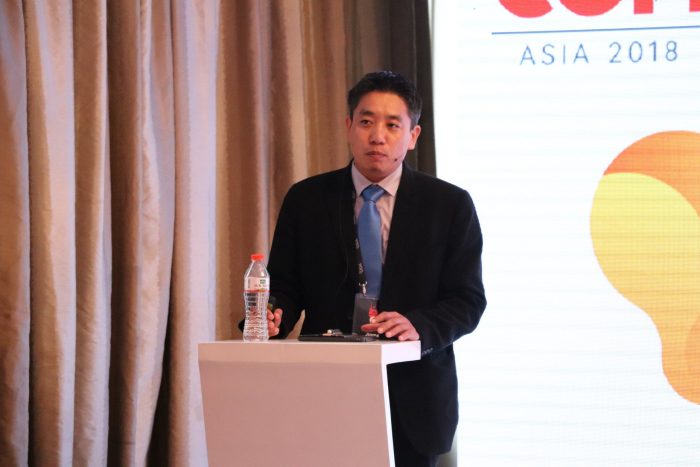
In terms of software, Bhutan has had a number of years where the Government has been investing in ICT and software. However, there was no exact standard set for practices and implementations. Thus began the journey of centralizing all ICT personnel and professionals across the country. As such, they all report to the Department of IT. This provides a more centralized approach.
This was followed by an e-Government policy. They believe the best approach to providing information to citizens is to have it online. The greatest benefits to the state can be achieved by investing in ICT more than anything else. They have also taken a regulated approach to how the Government would approach investments in IT. This would eliminate multiple systems managing the same information repeatedly.
If data exists in a particular agency, that data must be shared, Jigme explained. Jigme then spoke about the e-Gov Governance structure in Bhutan. This involves a hierarchical layout which includes an e-Government Review Committee, executive committee, e-Gov Council, and finally, Cabinet.
This is because the country believes that decisions and transformations in IT would require intervention from the Cabinet-level. Jigme then explained their e-Government platform which is still a work in progress. And yes, you guessed it, it’s powered by WSO2’s architecture.
How Janashakti embraced the Digital lifestyle
This was the next customer success story on day 02 of WSO2Con Asia. This was carried out by Kuganathan KV, Head of IT at Janashakthi Insurance PLC. His story was about how Janashakthi could bring Insurance to the Digital Era? That was indeed the question.
When he first asked the IT Department of Janashakti about their existing system, he was told that it was a mixture of all the data with “fields” for everything. He related the scenario to have a “Chinese soup”, where it was a mix of everything. In order to extract individual components and make it a “clean soup” would be his biggest challenge.
They couldn’t do it alone, Kuganathan explained. They needed a partnership. He went on to talk about changing business conditions. This involved anticipating market changes, developing new customers, and reducing operating costs. Throughout all this, Kuganathan was on the lookout for the right partner. Rather than being constrained by an RFP (Request for Proposal), Janashakti took a different approach in picking partners. Rather than him stating what was needed, they asked what their partners can come and offer them.
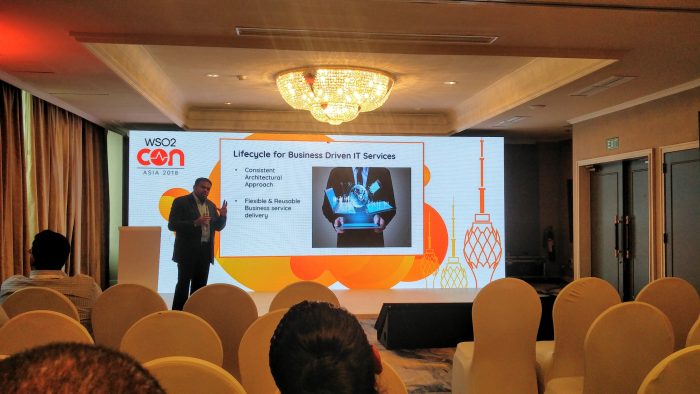
They went ahead with WSO2 and over the course of one year from 2017- to the 6th of July 2018, Janashakti was able to launch a fully digitized insurance system for their clients and customers. Kuganathan also spoke about a self-care platform that Janashakthi is working on. This would enable them to step up from just being an insurance company, to being a full lifestyle management platform. The results would be to increase traction with customers and increase their brand awareness.
They’ve also introduced a wellness platform for customers as well. Further, Janashakthi has developed an Agent Virtual Office. This is aimed at Janashakthi’s agents so that they have can track their progress. It’s essentially an all-in-one office for JS’s agents.
Using a Digital Integration as a Service
This was carried out by Danesh Hussain Zaki, Lead Architect at Wipro Limited. Danesh started off with a brief about Wipro and what they do. From there, he then went on to explain why Wipro went about developing solutions. The reasons he listed ranged from issues in multiple integration products in an enterprise being inadequately utilized, no single view of integrations, and also considerable effort needed to fix commonly occurring integration errors.
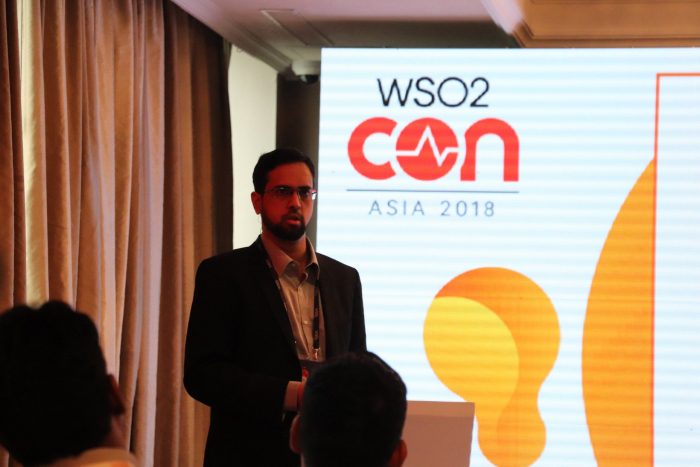
Danesh then spoke about DIaaS or Digital Integration as a Service. This is a hybrid integration solution with a unified view of integrations across APIs, Microservices, and B2B components. Danesh then explained the platform architecture of the DIaaS Platform, which they use in tandem with WSO2. He also explained some WSO2 APIs used such as Publisher and Analytics APIs.
The rest of Danesh’s session consisted of a demo of the Wipro DIaaS. Here he explained and went into depth about the more technical aspects of Wipro. He also spoke about WSO2’s APIs and architecture and how it helped Wipro carry out its development work.
Measuring your customer’s emotions
Following a small break, we Lahiru Waduge, Head of Client Services at Emovyz along with Andun Gunawardana, Co-founder and Principal Engineer at Emovyz speaking on their personalized experience management API.
Powered by Emojot Inc, Emovyz is a B2B experience management platform providing Voice of Experience solutions. The company essentially taps into the emotions of their clients and customers to use that data to create new services. The duo took the presentation in portions, speaking about what Emovyz does and also spoke about some examples of their work.

For example, they use Voice of Dealers for Fiat Chrysler Automobiles USA to spread the word of their new vehicles to customers. So how does WSO2 help in all this? Well, that’s what we were about to find out.
They spoke about their component-based architecture. This includes mobile and web surveys, communications, stream processors, personalization engines, communications, etc. They use the WSO2 Identify server for the User Manager Architecture. The next component explained was the WSO2 API Manager. He then spoke about the stream processor architecture. This makes use of the WSO2 Complex Event Processor.
Helping Qantas’s APIs take flight
Did you know that Qantas was an acronym for Queensland and Northern Territory Aerial Services? They were the first to establish the first business class in flights as well. Speaking to us about all this was Souvik Mukherjee, Domain Owner – Integration at Qantas Airways Limited.
Souvik started off his session by explaining that a major component at Qantas involved connecting the dots. These dots include customer profiles, passenger bookings, and basically anything that would be related to flights.
Souvik then spoke about the challenges in technology such as being slow to adopt new technologies, incurring heavy costs, etc. In order to meet all these, they must meet customer expectations. This includes being fast, being multi-channel, having high scalability, and also being innovative. “We need to make sure we’re investing in the correct areas to ensure that our revenue goes higher”, Souvik explained. As such, Innovation is the key.
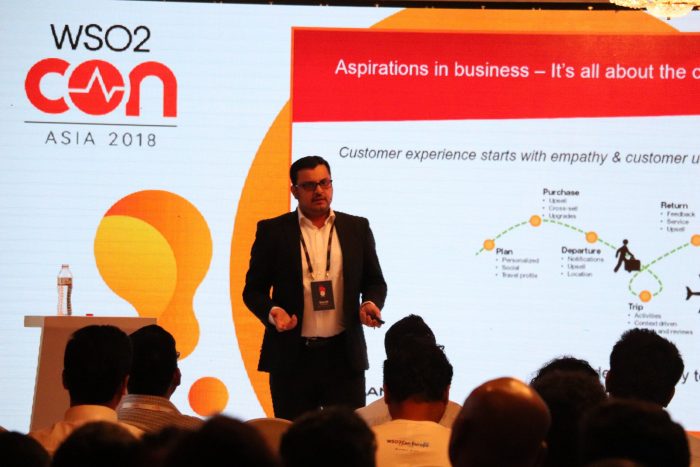
To this extent, Souvik explained that Qantas has taken strides to be agile, make use of RESTful APIs, Embracing the cloud, and delve into microservices. This is where WSO2 came into the picture, handling all of Qantas’s API needs. So why API gateway and management for Qantas? Well, simply, to exploit their assets and also at the same time to protect their assets simultaneously. This means that you can leverage your assets and also keep them safe. It’s not also just about establishing the platform; it’s about operating it as well.
Integrating WSO2 with a Geospatial Data Sharing Platform for Bangladesh
The session was carried out by Mohammed Abu Hamid who is a consultant for GeoDASH System at the World Bank. Essentially, GeoDash is a web-based application and platform for collaborating, storing, and sharing geospatial data. It is owned by the Bangladesh Computer Council and is actively supported by the World Bank Group. It provides data storage, retrieval, viewing, and mapping capabilities.
So how does WSO2 fit into all this? Well, in order to make GeoDASH services work with other services in Bangladesh, there was a plan to link GeoDASH with other services. This would be done via WSO2 middleware implementation. In order to do this, there would be certain guidelines and standards from the Bangladesh Network Enterprise Architecture (BNEA) that needed to be complied with.
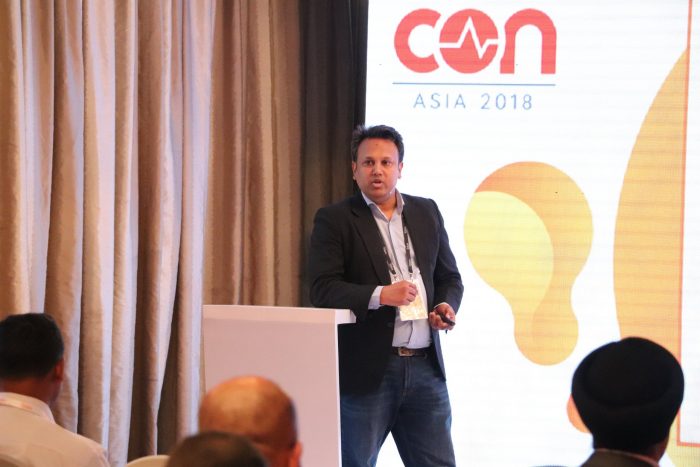
How that everything is in place, GeoDASH has become a vital tool, especially in the event of a natural disaster as it helps in mapping out disaster-stricken areas. Mohammed also spoke about the NDSI or National Spatial Data Infrastructure in Bangladesh. Once that is done, Mohammed noted that all efforts would be focused on the Urban Spatial Data Infrastructure.
Getting on a Bus for a journey
Before you ask, no, we didn’t leave Day 02 of WSO2Con Asia 2018 to board a bus. Rather, this was the story of the digital transformation of the Australian Catholic University. Following lunch, we were back at the Green Room to listen to Bernard Stepien, Associate Director, IT Applications & Platforms at the ACU.
Bernard explained that the previous system at the university had separate modules for students. This was problematic because modules were all over the place. So the first step in digitization was to create an AIO student portal. It would also be an anywhere anytime accessible portal. By using a single sign-on, students could have access to a number of categories. The benefits included agility and resilience, cloud service adoption, secure reliable, and timely data transport. It also created a new culture, so much so that they couldn’t keep up with demand.
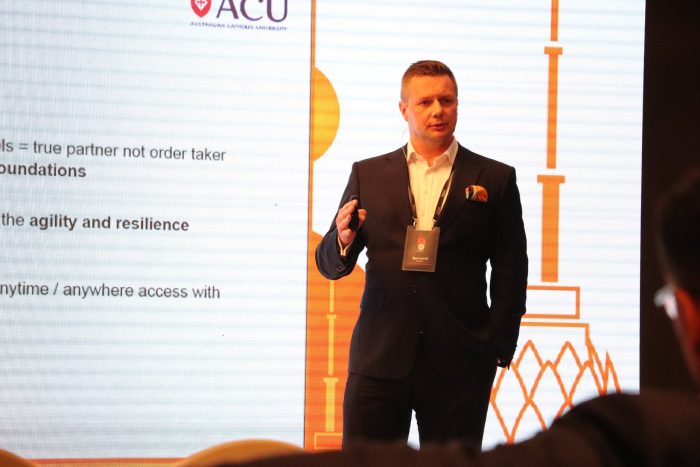
With the aid of WSO2 as the digital backbone, all parties of ACU can communicate with each other. Next up is the digital enablement for the ACU student experience. This includes standardization such as search ad content personalization, CRM integration, chatbots, etc. They are also working on other cool stuff such as student lifecycle experience feeding the enabling tech roadmap.
In conclusion, Bernard’s key takeaways were that before jumping the bus, know where you’re going, validate your hypothesis. While on the journey, make sure you have the right governance and don’t try to do everything at once. Once you get to the first destination, reflect and plan the next leg. Be prepared to adjust your plan (be agile), and always remember to refuel your bus.
Piseth Ros spoke about WSO2 API integration
This was a rather technical customer story that dealt with connecting with APIs, providing API integration, managing APIs, and dealing with protocols provided by APIs. Carried out by Piseth Ros, Head of BSS/OSS and VAS, CamGSM, the session delved into the technicalities of managing API integrations, API security, and API requests.
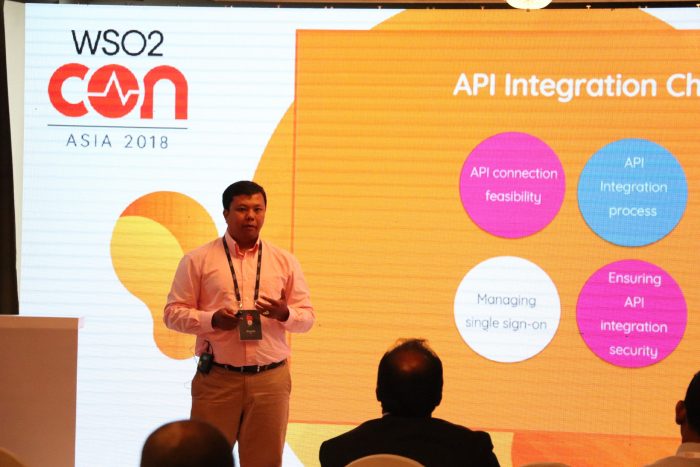
Piseth used a number of technical terms and slides to explain how WSO2’s API manager and related tools helped CamGSM Co. Ltd, which is a Cambodian-owned and operated telecommunications company deploy and maintain their APIs. In addition, their partnership with WSO2 also allowed them to quickly troubleshoot faulty APIs or issues in the architecture and fix them as soon as possible.
Learning about WSO2’s partner program
This was the last customer story for the day. It was actually more along the lines of what WSO2 offers to their clients and customers. Speaking on stage was John Saylor, Vice President General Manager of Global Channels and OEM at WSO2.

John’s session was about WSO2’s partner program. This is a new program designed for organizations with technical capabilities to build and deploy solutions using WSO2 technology. John went in-depth talking about partner enablements such as creating programs to train and educate partners, minimizing the cost of the partnership, and an increasing in benefits.
With the Customer stories track coming to an end, we made our way towards the “Red Room”, where topics related to a very interesting trend were going to take place. This was about Open Banking.
Opening the Door to Digital Transformation
First on stage was Seshika Fernando, Head of Financial Solutions at WSO2. Seshika started off by asking a simple question.
How many times have you seen a really good offer for a credit card offer, only to find out that you have the wrong credit card?
Seshika FernandoFrom branches to phones, to ATMs, Online banking, mobile banking, and finally to APIs there are a plethora of options for banking. But for the next generation, consumers would want their own experience with banking.
If you look at the banks in Sri Lanka, there are a number of banks that people flock towards, because people feel that they are safe. This is where Open Banking via Open APIs comes into play. Essentially with Open banking, you can have 3rd parties that take care of banking, regardless of the bank. Seshika went on to explain that customer identification and consent are two important factors for open banking.
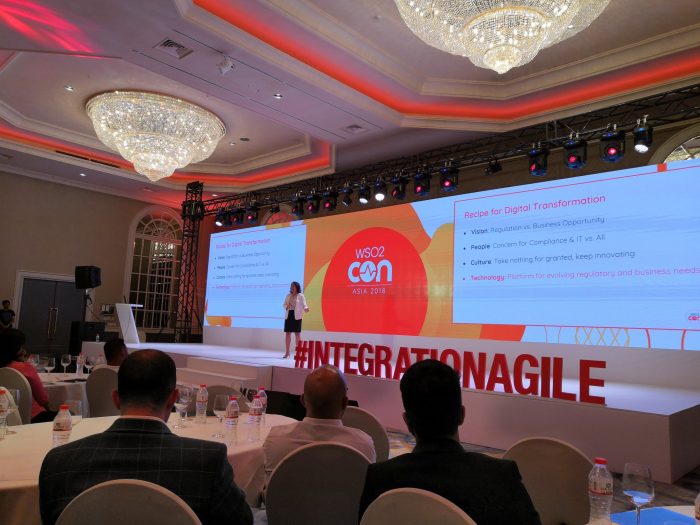
Despite open banking being adopted all over the world, there are still banks and financial institutions that feel that open banking would result in a loss of customer relationships, a loss of identity, and perhaps even increase competition and loss of revenue. On the other hand, other banks think of it as a new ecosystem where they can have a first-mover advantage. They can break tradition as well.
With open banking, because the customer details are open. Banks can provide customized incentivized offers. Right now, we go to the bank and we save up for loans or for children. But in the future, if the bank doesn’t become a part of the customer’s lifestyle, the banks will die.
Digital Initiatives taken by Nations Trust Bank
From launching their own banking app to being the first to implement an open banking mobile app as well as making their first Open Banking API, Nations Trust Bank is certainly making a splash. Speaking at WSO2Con Asia 2018 was Nisala Kodippili, Chief Information Officer at Nations Trust Bank.
Nisala started off by talking about NTB and its history. From there, he went on to speak about the Nations Trust Digital Transformation Strategy. As such, Nisala explained that NTB is focusing on engagement, Operations, and Disruptions.
From there, Nisala went on to speak about FriMi. In essence, FriMi is the first initiative for an open banking platform. It has also transformed into more than just a banking app. It is now regarded as a digital lifestyle app. Delving into the technical aspects of FriMi, Nisala also spoke about the advantages of the FriMi app and the APIs involved in it. According to Nisala, it gives greater visibility and control, along with high security and a centralized identity and access management platform.
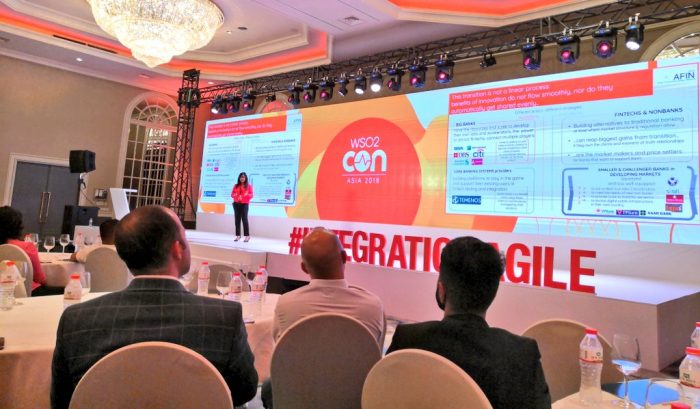
In conclusion, Nisala explained that WSO2 has enabled NTB to build scale and secure the FriMi platform with greater agility as well.
Open APIs for Financial Inclusion
This was the last session at the Open Banking track. It was conducted by Yosha Gupta, Digital Financial Specialist, and Financial Inclusion Consultant, IFC, World Bank Group. We previously saw Yosha on Day 01 of WSO2Con Asia 2018 where she spoke about Open Banking.
Yosha spoke about her work with AFIN or the ASEAN Financial Innovation Network. Their goal is to Afacilitate innovation and collaboration between financial institutions and FinTechs.
Essentially, AFIN aims to become the largest platform with relation to Open Banking. They would attract as many FinTechs as they can to the platform. These FinTechs would in turn bring all their APIs to the platform so that everyone can see them.
From there, Banks can pick the FinTech of their choosing and see which FinTech has the APIs that the bank is looking for. Once the matchmaking between the Fintech and Bank is done, AFIN would also have a sandbox to be able to use the API and experiment and see if the Fintech company meets the bank’s requirement. With a few questions from the audience, Yosha’s session on Open Banking came to an end.
That wrapped up WSO2Con Asia 2018
But that didn’t mean that the participants were ready to go home. There was also the WSO2Con Asia 2018 Afterparty. What happened there? Well, that’s an entirely different story.






GIPHY App Key not set. Please check settings